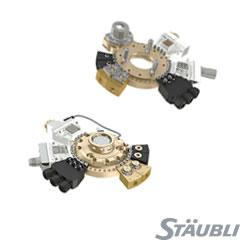BG series of Dunkermotoren now available with integrated PROFINET interface
Modern machines and devices use all available process data to make processes transparent and optimize them. PROFINET as a communication standard is ideally suited for this. It is therefore hardly surprising that Dunkermotoren, as a drive technology manufacturer, makes use of this technology.
Modern machines and devices use all available process data to make processes transparent and optimize them. PROFINET as a communication standard is ideally suited for this. It is therefore hardly surprising that Dunkermotoren, as a drive technology manufacturer, makes use of this technology.
Dunkermotoren, market leader for integrated BLDC motors, was the first to succeed in completely integrating PROFINET functionality, including the PROFIdrive profile with application classes 1 and 4, into motors as standard. This offers PROFINET users significant advantages in cabling, commissioning and operation.
Only the power supply and bus connection need to be established, and the motor can be integrated into the commissioning environment, e.g. the TIA Portal, and programming can begin. During operation, the controller accesses all motor parameters and uses them for process control, error monitoring, predictive maintenance and many other IIoT or cloud features.
BG 95 dPro PN was the first fully integrated PROFINET motor from Dunkermotoren. BG 66 dPro PN will follow at the end of 2020, BG 75 dPro PN at the beginning of 2021. Already available is the external control electronics BGE 5510 dPro PN, which shows its advantages especially when the motor length is severely limited or in combination with BG 45. Thus, Dunkermotoren customers can use the advantages of PROFINET for drive tasks in the power range from 40 to 1100 W duration and 4000 W peak. PROFINET certification is planned for the end of 2020.
Featured Product

